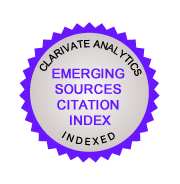Piping processes in the region of Murcia (South-east of Spain)
DOI:
https://doi.org/10.18172/cig.1214Abstract
The processes of sub superficial erosion or piping have a wide development in semiarid environment when the suitable characteristics for it happen. In the Region of Murcia 67 areas have been located where the presence of piping concerns a notable surface and whose evolution degree is very advanced. These areas often coincide with neogene-quaternary basins, of marly lithologie, and whose predominant soil use are old dryness culture fields, terraced and abandon today. In all the areas detailed morphologic studies have been realized and in 15 of them, soil samples at two depths (surface and 100 cm depth) were taken. Physic- chemist analysis have been carried out with the aim to study their characteristics and to establish possible formation reasons. From the morphologic point of view, the terraced importance stands out on having generated a hydraulic gradient and as the pipes depth usually coincides with the low terrace height. The results of the realized analyses show as the piping presence, in the majority of the areas, is linked to changes in the structure and soils texture at different depths (thinner textures in depth and lacking structure soils), and high exchangeable sodium percentage (superior at deeper levels) what favours the soil dispersion and the appearance of these processes. As practices of soil conservation, in areas with these characteristics, the terraced fields would be totally inadvisable, especially with high terraces, and its later abandon.Downloads
Downloads
Published
How to Cite
Issue
Section
License
The authors retain copyright of articles and authorize Cuadernos de Investigación Geográfica / Geographical Research Letters the first publication. They are free to share and redistribute the article without obtaining permission from the publisher as long as they give appropriate credit to the editor and the journal.
Self-archiving is allowed too. In fact, it is recommendable to deposit a PDF version of the paper in academic and/or institutional repositories.
It is recommended to include the DOI number.
This journal is licensed under a Creative Commons Attribution 4.0 International License













